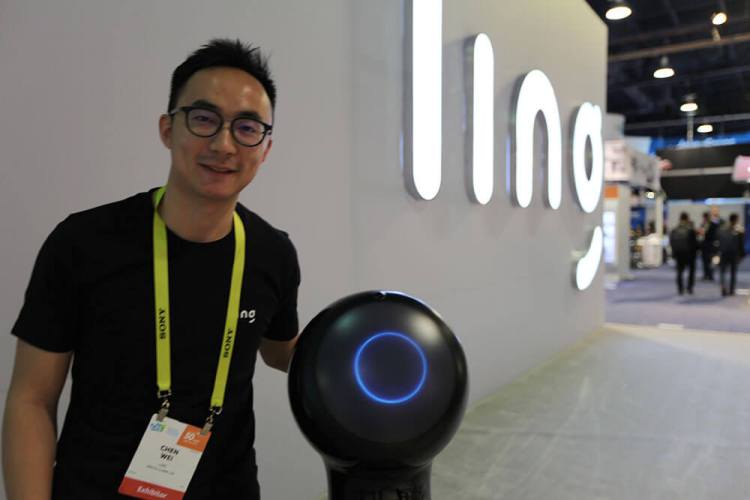His name is Wilson.
If you don’t get the reference to the movie starring Tom Hanks, it’s not a problem. If you do, you know it’s a ball that serves as a human replacement in Cast Away.
Ironically, it’s also the name of the designer of a new patrol and meeting bot. Chen “Wilson” Wei is smart and erudite, someone I’d like to be the person behind my replicants.
“We wanted to make this bot like an elegant female,” he told me at CES 2017 in Las Vegas, the annual trade show that is often the launch pad for new gadgets and bots. This one, called Wavebot, looks more like Darth Vader than Audrey Hepburn — it’s all black, with what looks a bit like a cape. Wei said there is a white version as well, but they wanted to establish a persona.
The bot has facial recognition so it can glide into a meeting and see that Bob, Sue, and Mary are there. While these features were not available to test yet, the idea is that the bot could carry on a conversation. Wei said it could even tell jokes.
In patrol mode, which I tested at CES, the bot can move around on a set pattern in the office and detect motion. I stood in front of it several times and it stopped or moved around me. Ling AI, the company behind the bot, and which is also involved with the Jibo bot, is planning to make the patrol bot capable of alerting authorities if it runs into intruders, although spokespeople said that would vary by country. For example, in the United States, you might not be able to have a bot call 911. (As a side note, I have not heard of laws that govern bots’ use of 911, but they will likely emerge soon.)
I could see having a bot that can handle conferencing duties. The face of the bot can change — showing a video of the other office across town or an expression to show that it either understands or is confused by the topic. Perhaps the bot could be able to record everything in the room, or serve as an avatar that responds to questions on your behalf when you can’t be physically there.
Wei told me they are using natural language understanding to process what people say and even detect emotions. A rep also told me the bot could understand office culture; for example, maybe it doesn’t intrude on meetings after lunch because everyone knows those are brainstorming sessions. The bot could even act differently based on who is in the room — more formal for execs, more casual for a meeting with sales people talking about party plans.
The bot is still under development, but reps said it is possible that Wavebot will make its way to the U.S. market — that’s why they’re showing it at CES in the first place.


